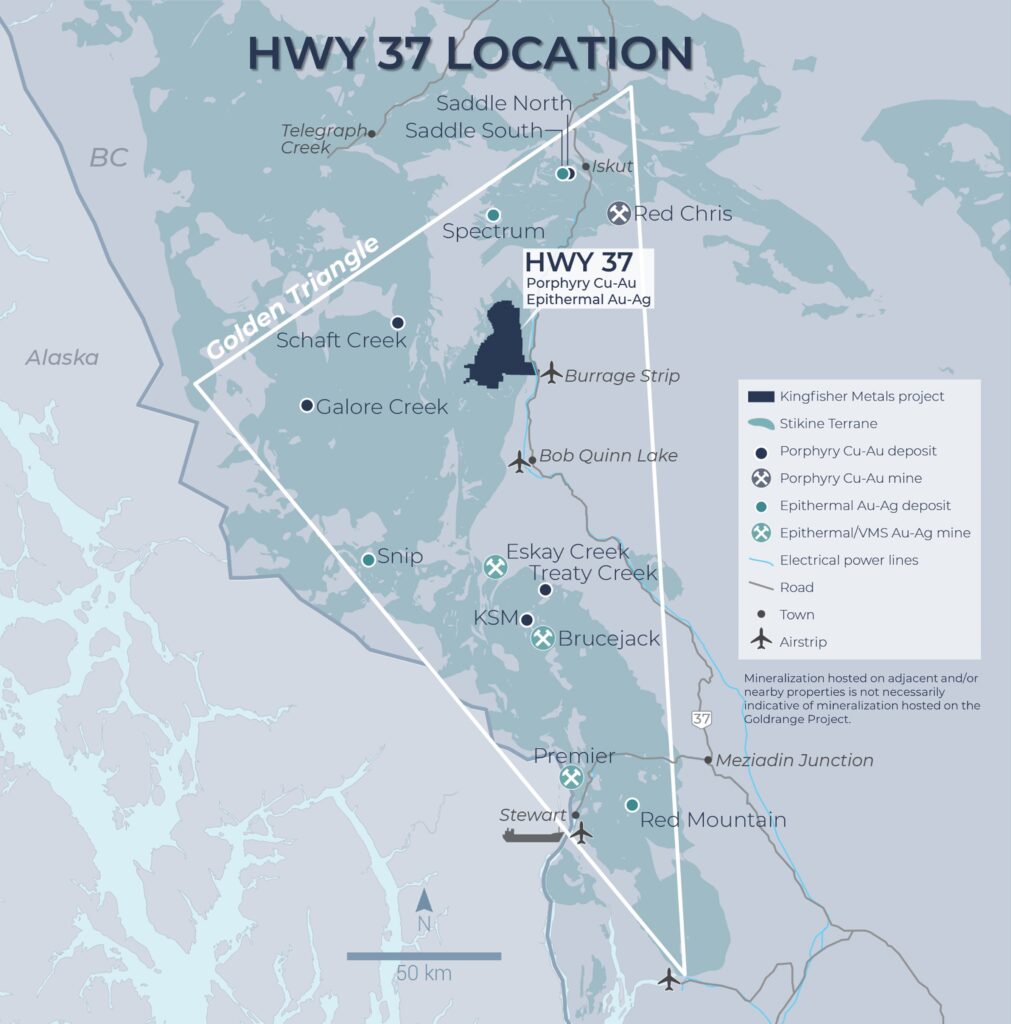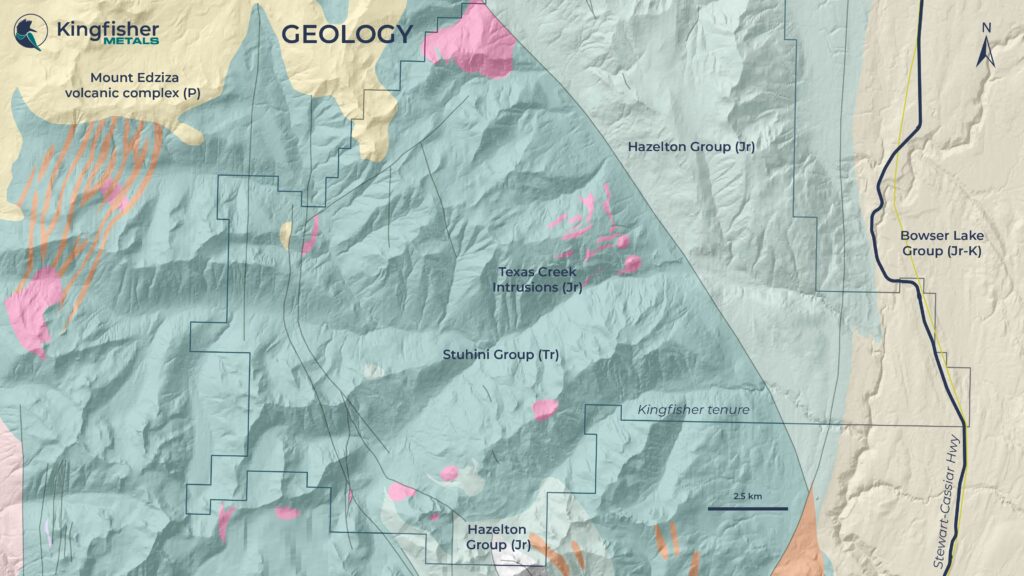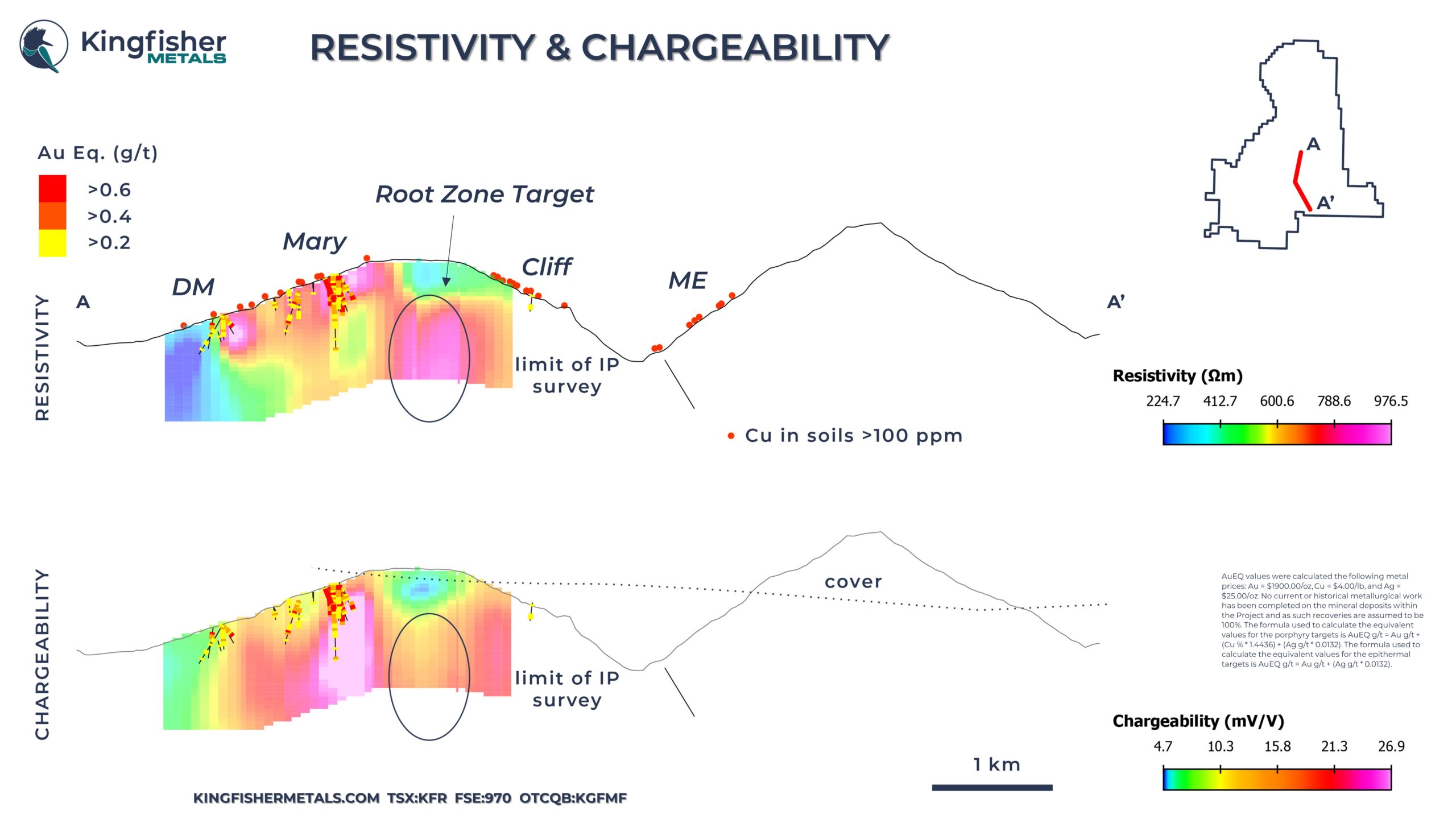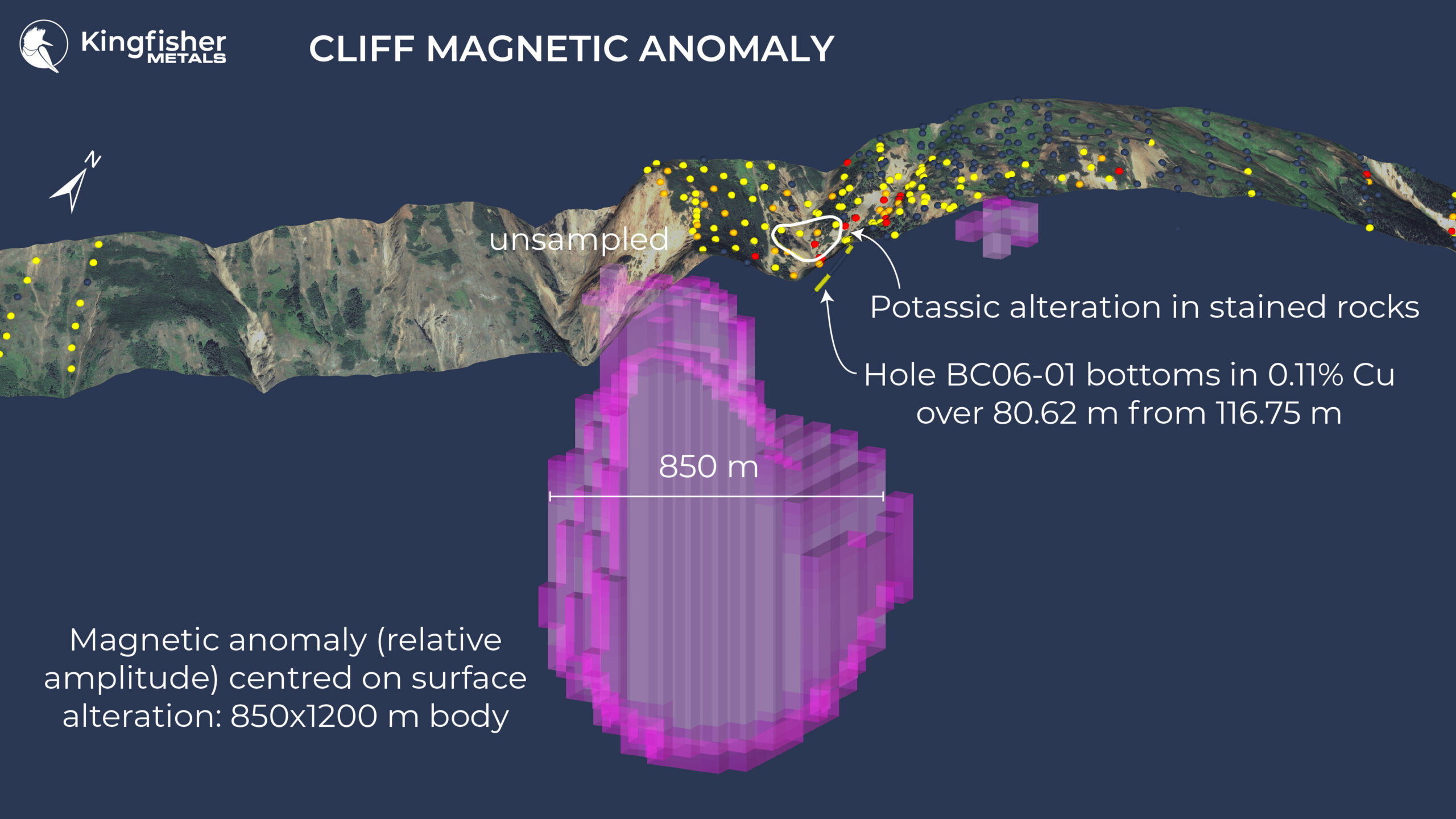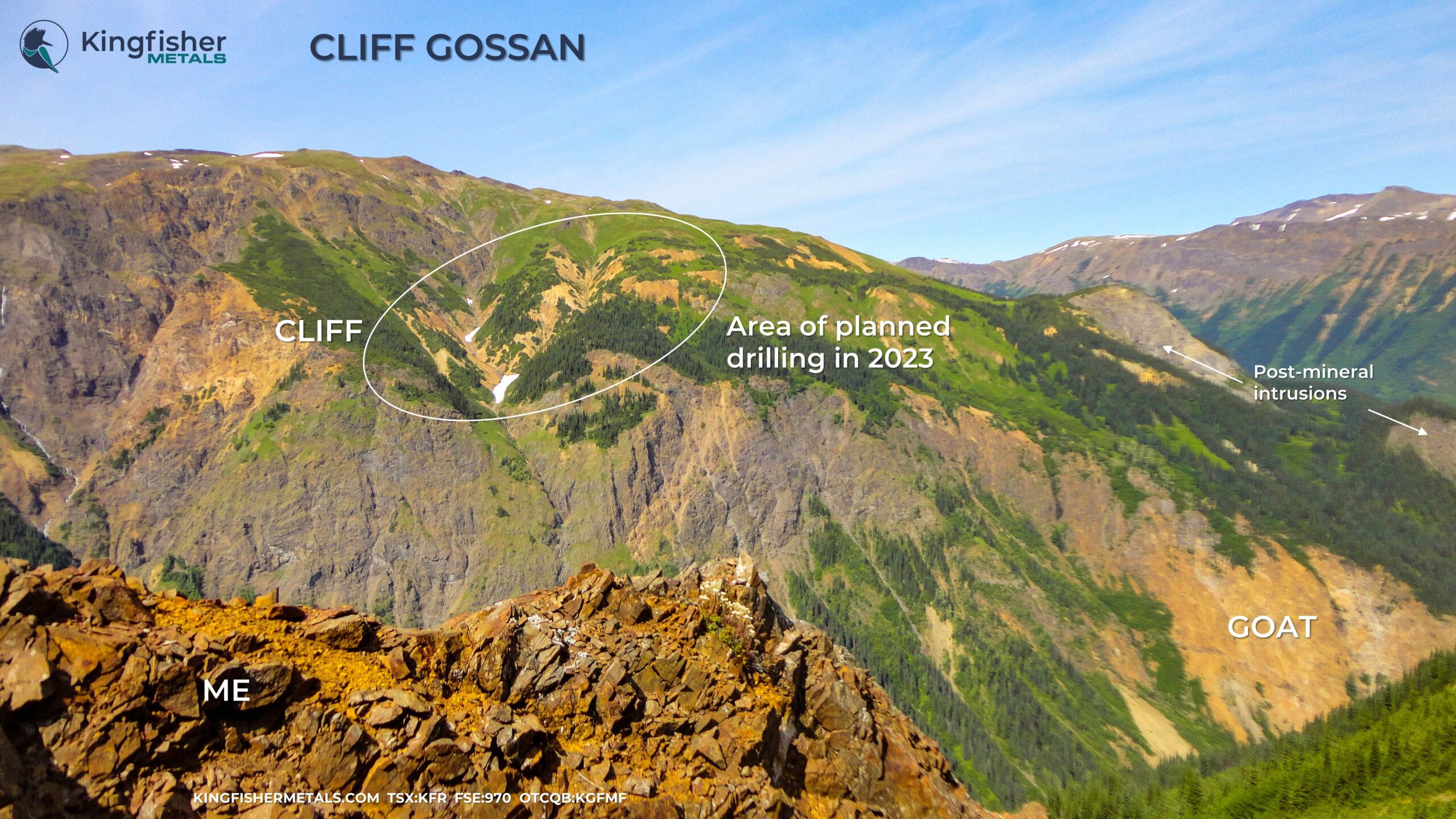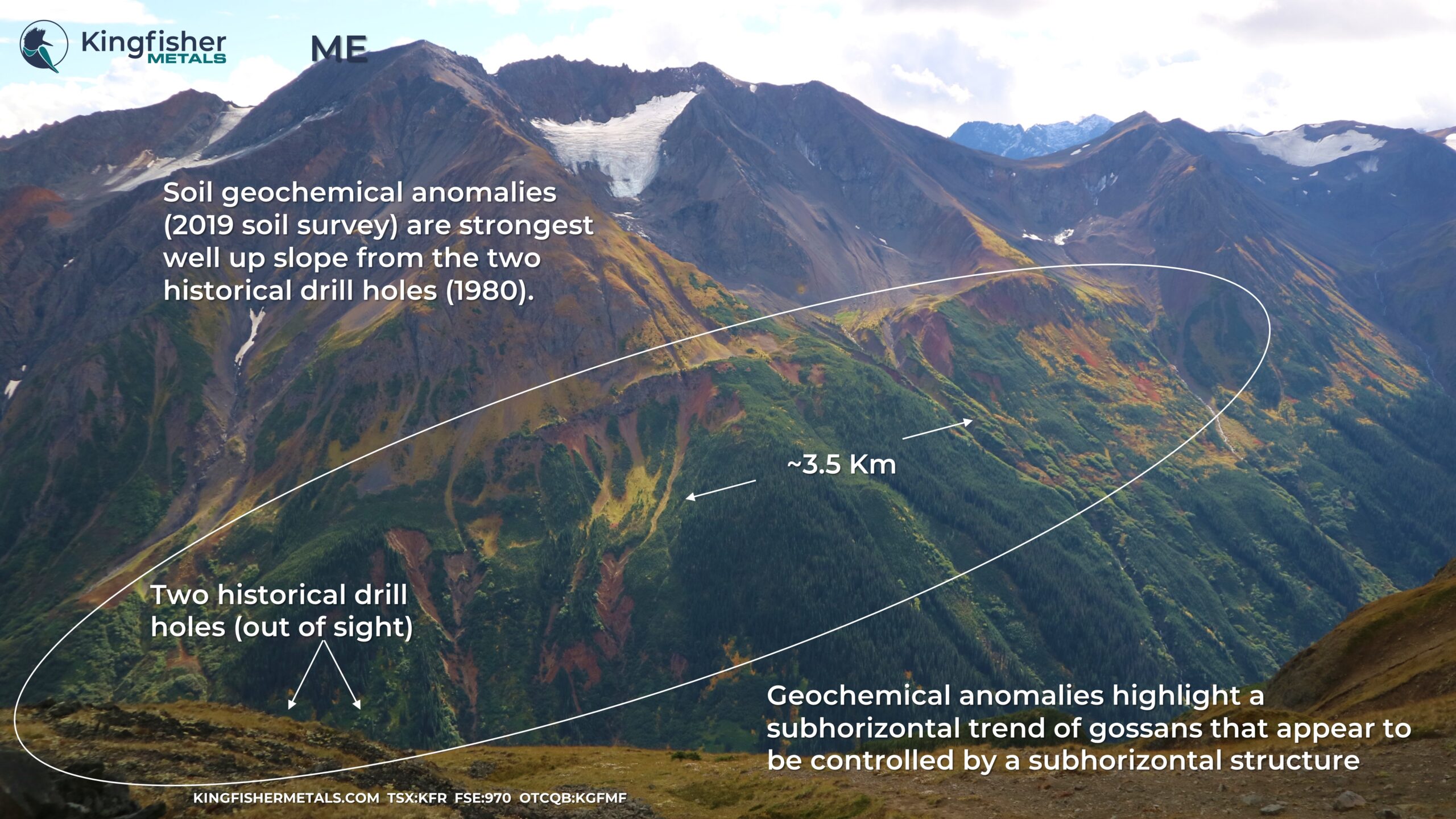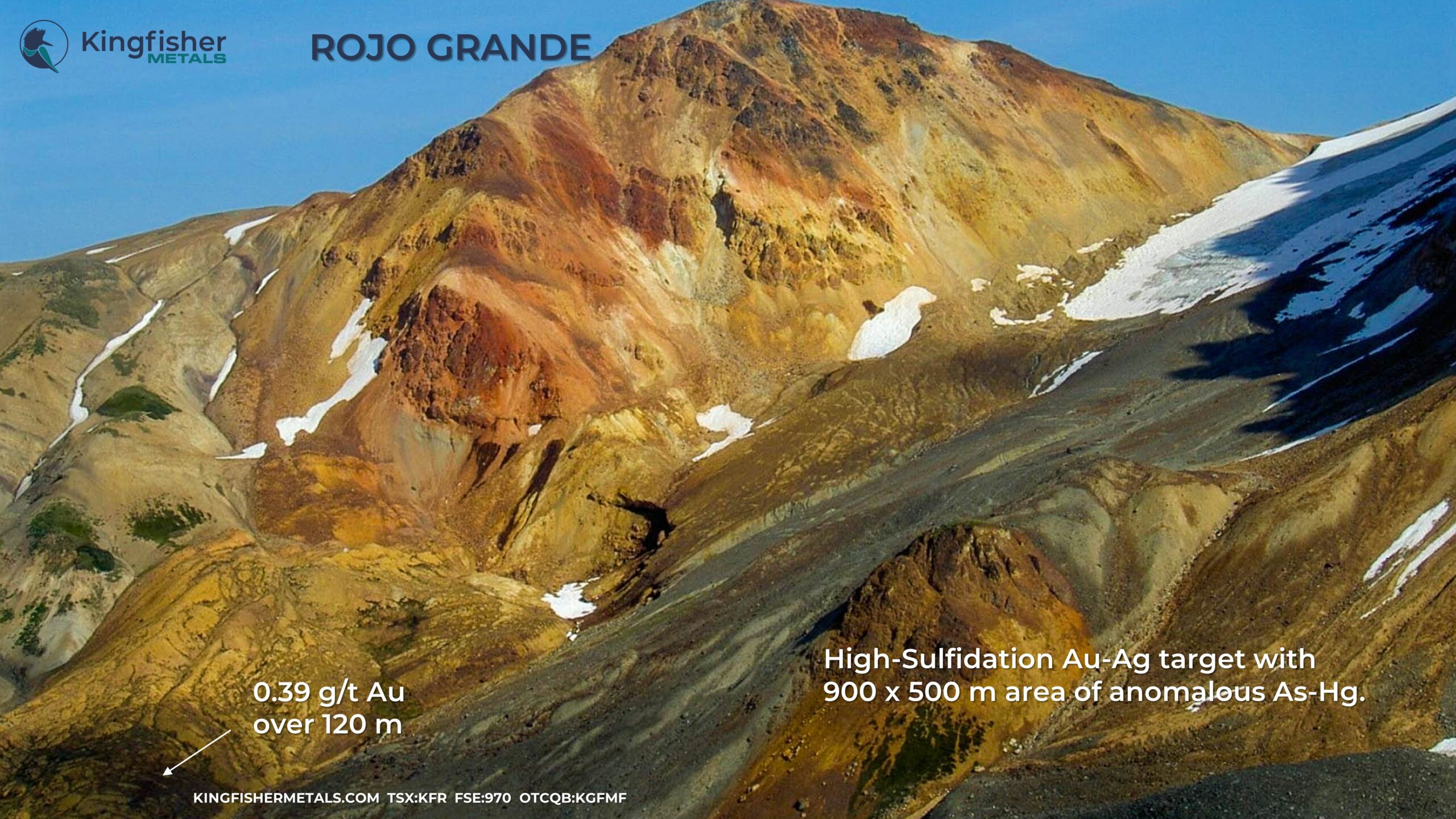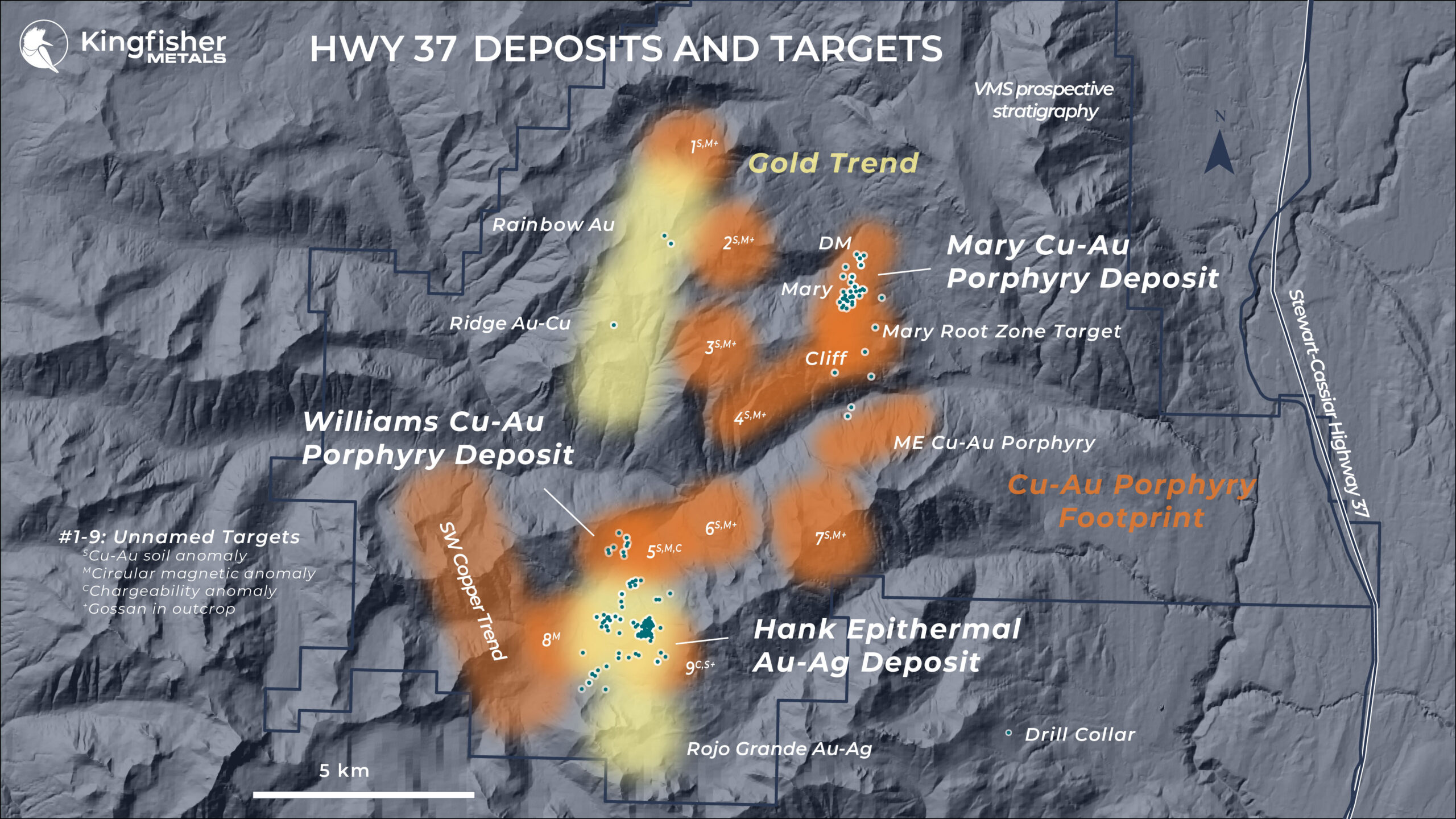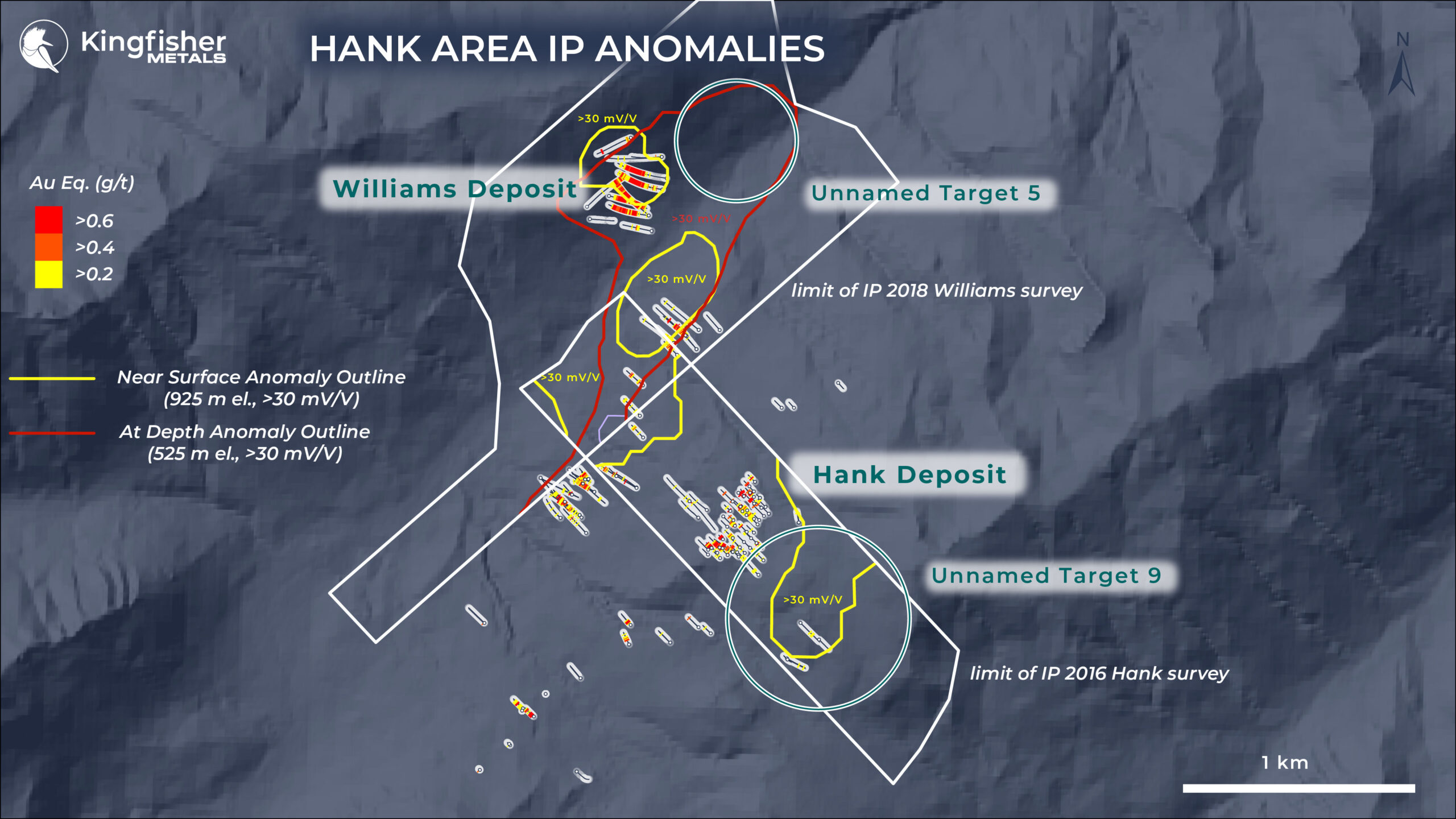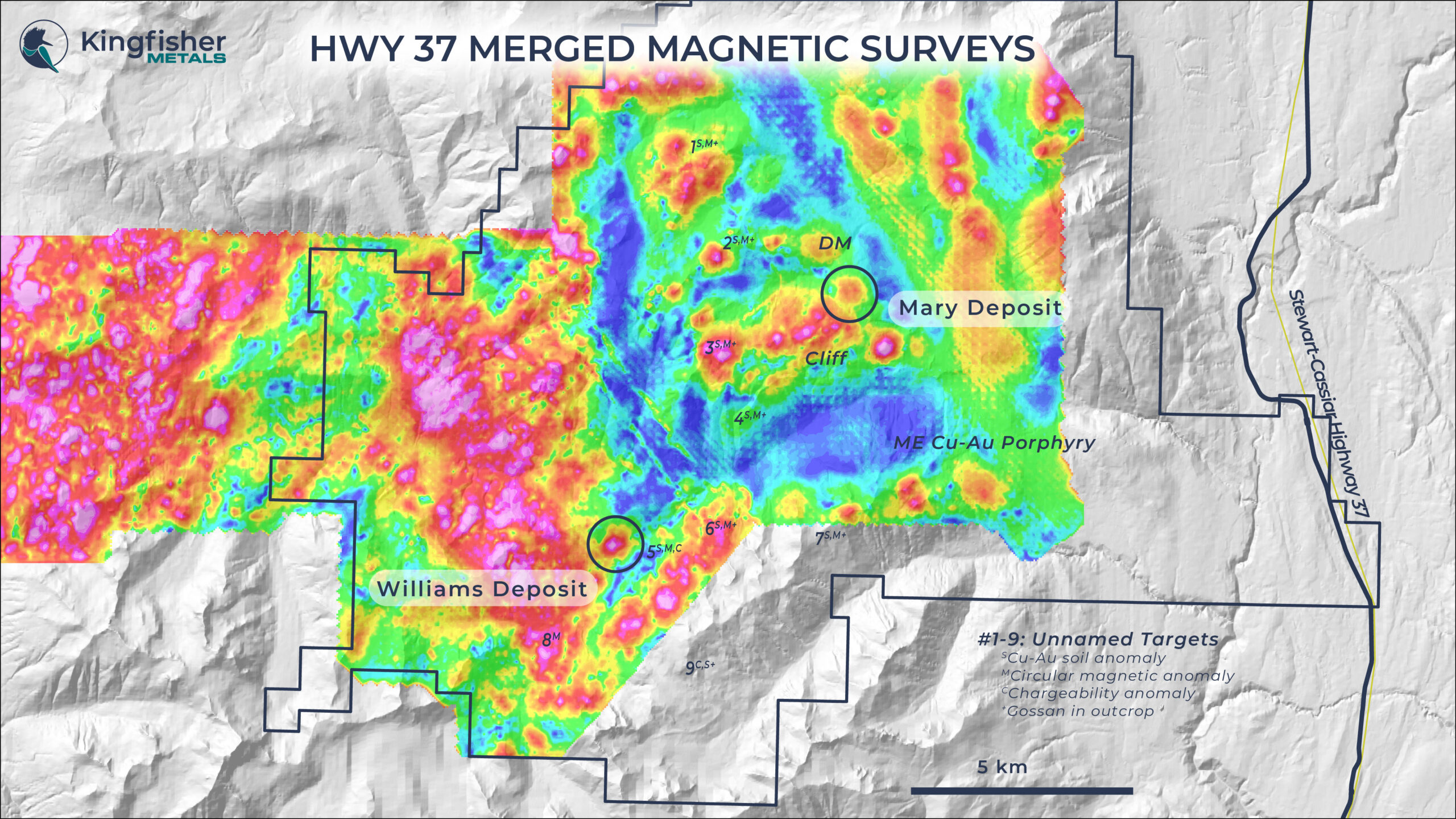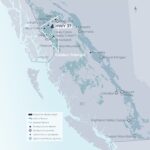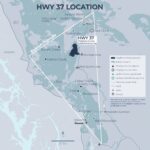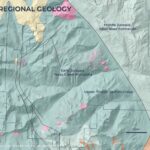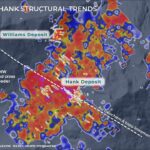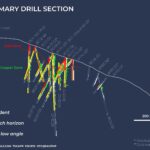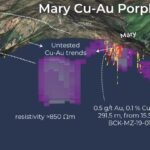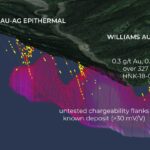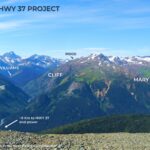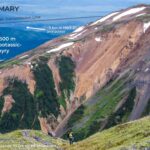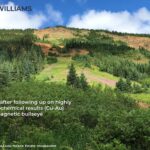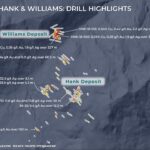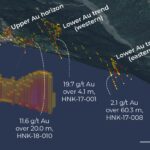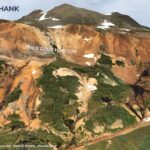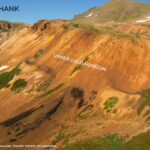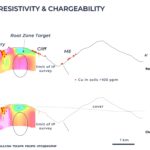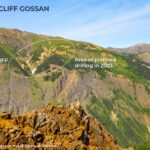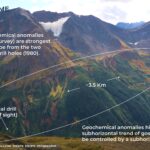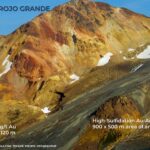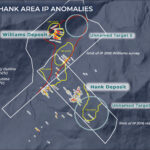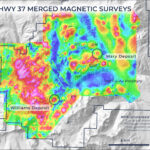The Mary Au-Cu Porphyry deposit (Minfile 104G 018) was first drilled in the 1970s, with continued campaigns through the 1990s and 2000s also referred to as ‘Main zone’ or ‘Ball Creek’ porphyry. The drilled regions of the porphyry system are marked by unusual low angle metal patterns in Au and Cu. The projection of the low angle metal patterns remains untested to the south along trend, where the most recent drill hole from 2019 intersected 0.5 g/t Au, 0.1% Cu over 291.5 m from 15.5 m (BCK-MZ-19-01).
The Mary deposit lies within a ~6 x 6 km porphyry alteration footprint, yet the scale of the deposit and historical drilling represents a small and shallow percentage of the altered rock. The high gold:copper ratio, the absence of bornite, and the structurally-controlled character of mineralization are common features of upper level to flanking porphyry systems. The mineral zone of the Mary deposit is characterized by a resistivity high body, with a similar low angle shape. The resistivity is interpreted to reflect high quartz and K-feldspar in the alteration zone. This resistivity feature extends at depth to the south to form a bulbous subvertical anomaly, similar in size and shape to a more classic mid- to deep-level porphyry body. At the deposit-scale, a zonation from a gold-rich domain at the shallowest levels grades downward to a copper-rich domain at depth.

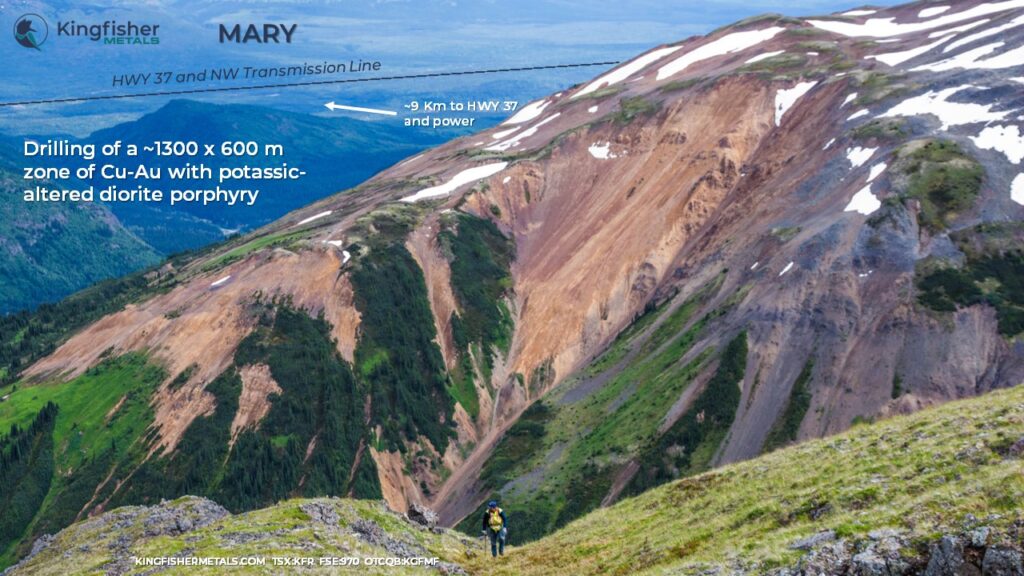
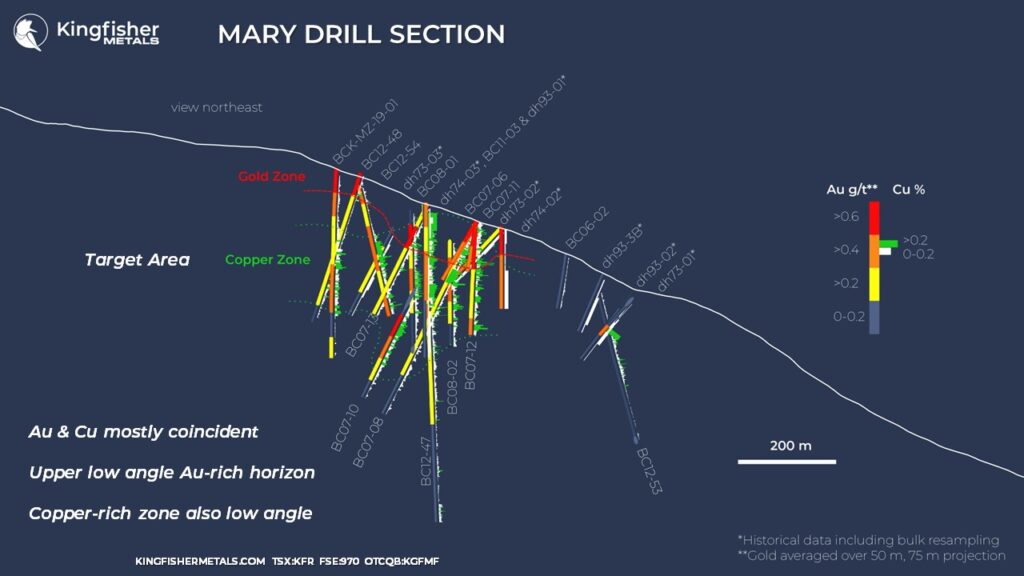
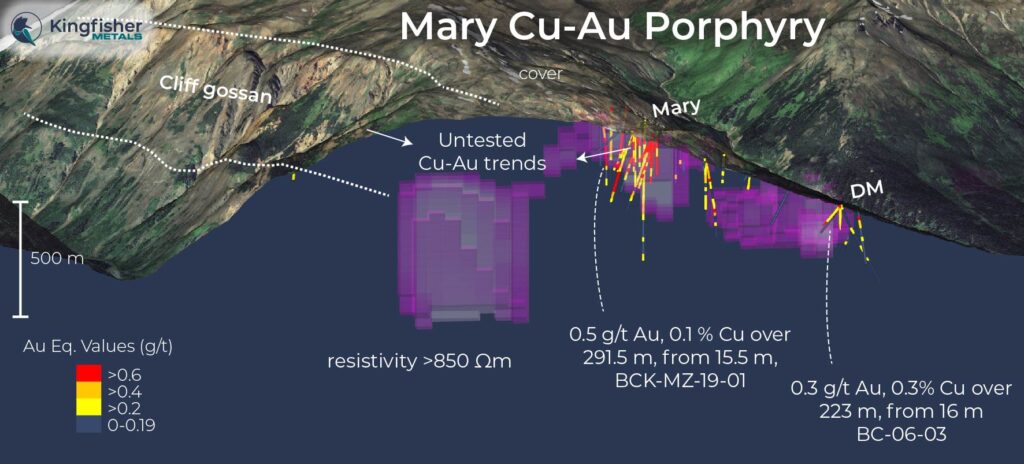
The Williams Cu-Au deposit (Minfile 104G 042) was first identified through Cu-Au soil geochemistry and coincident airborne magnetics. The porphyry was discovered through hand stripping overburden on the magnetic anomaly in 2017 and drilled the following year. The copper-gold body is drill delineated to ~550 m depth starting from surface. Monzonite porphyry at Williams is altered to K-feldspar-quartz-biotite-magnetite-bornite-pyrite-chalcopyrite. The geophysical fingerprint for the Williams deposit is highly magnetic due to the presence of magnetite in mineralized material and high chargeability associated with sulfides (pyrite, chalcopyrite and bornite).
Low angle metal patterns at Williams and the presence of a chargeability anomaly lateral to the Williams porphyry reflect a similar pattern as the Mary deposit and those at KSM and Treaty.* Future drilling step-outs will target the continuity of lateral copper-gold systems at comparable levels to Williams
The recent Williams porphyry is the first discovery at the project made from modern geophysical datasets. Several coincident magnetic-soil geochemistry anomalies still exist in the larger Hank-Williams footprint in regions without drilling or surface sampling.

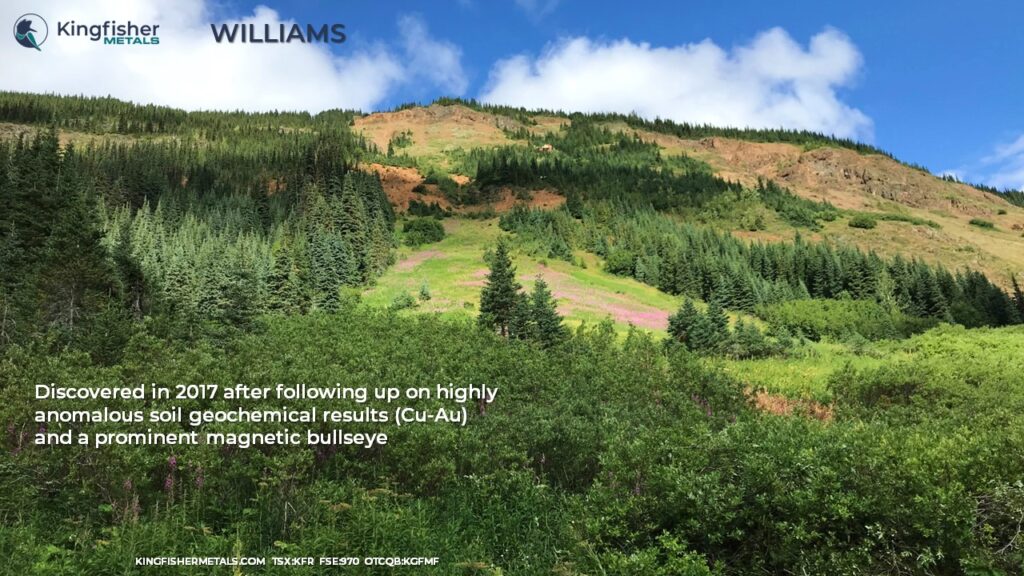
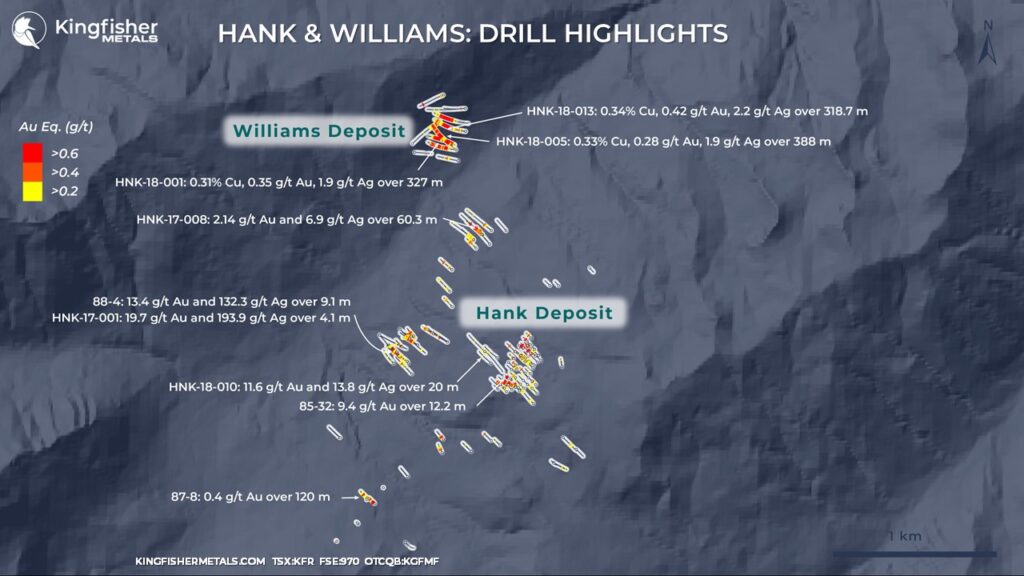
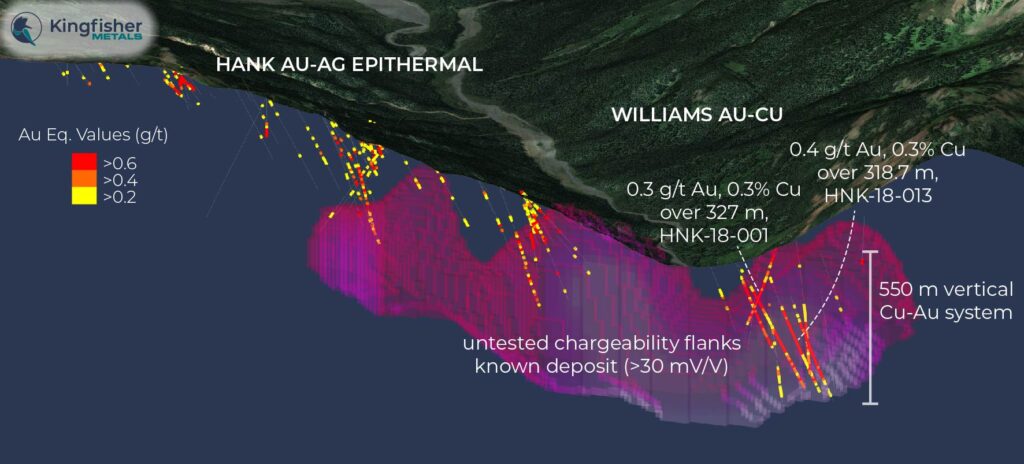
*Mineralization hosted on adjacent and/or nearby properties is not necessarily indicative of mineralization hosted on the Company’s property
The Hank epithermal Au-Ag system (Minfile 104G 107) was discovered in the 1980s within an alteration footprint that spans over 6 km x 3 km. The Hank deposit is a comparable age and setting as the Brucejack mine, one of the highest grade mines in the world, and both are classified as intermediate sulfidation type vein systems.* Prior drilling (21,663 m) is mostly confined to shallow depths of less than 200 m. The Hank deposit is comprised of two historically drilled gold zones: the low angle upper gold horizon (also ‘Pit’ or ‘Upper Alteration Zone’ or ‘UAZ’) and NE-striking lower gold trend (also ‘Lower Alteration Zone’ or ‘LAZ’). The majority of drilling has focused on bed-parallel shallow targets in the upper gold horizon with limited testing for structural feeders and steeper gold zones.
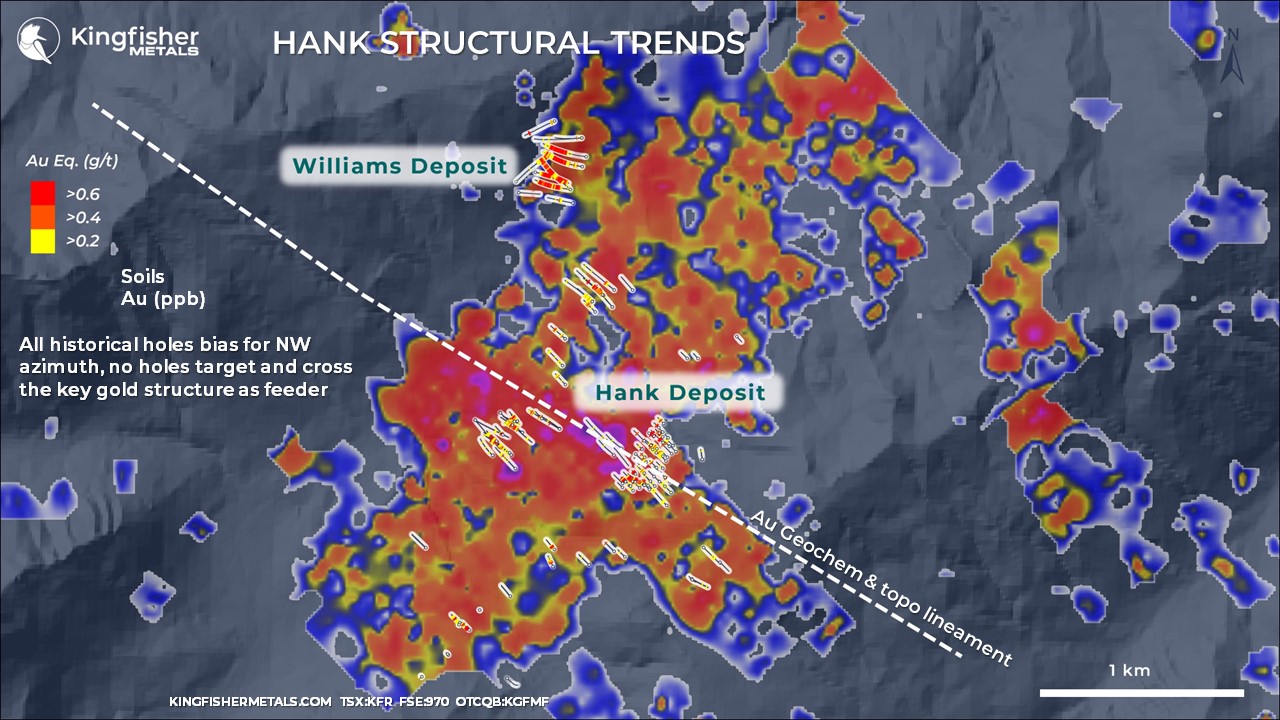
The most recent drilling at Hank (2017-2019) was the first to test deeper holes and intercepted higher grades than seen before including visible coarse gold. The first holes to test below the upper gold horizon intersected 11.6 g/t Au over 20 m (HNK-18-010) in 2018 in the new ‘Boiling Zone.’
Future drilling at Hank will focus on resource drilling in known deposit areas as well as structural feeder zones. The most important structure, the West Hank Fault strikes NW and is parallel to structural fabrics in the altered rock as well as trends in gold soil geochemistry. Of the 120 historical diamond drill holes at Hank, all were drilled in a northwest-southeast geometry, parallel to this structural trend. Future targeting will explore a wider range of drill azimuths to cross, not parallel these NW trending features.

AuEQ values were calculated the following metal prices: Au = $1900.00/oz, Cu = $4.00/lb, and Ag = $25.00/oz. No current or historical metallurgical work has been completed on the mineral deposits within the Project and as such recoveries are assumed to be 100%. The formula used to calculate the equivalent values for the porphyry targets is AuEQ g/t = Au g/t + (Cu % * 1.4436) + (Ag g/t * 0.0132). The formula used to calculate the equivalent values for the epithermal targets is AuEQ g/t = Au g/t + (Ag g/t * 0.0132).
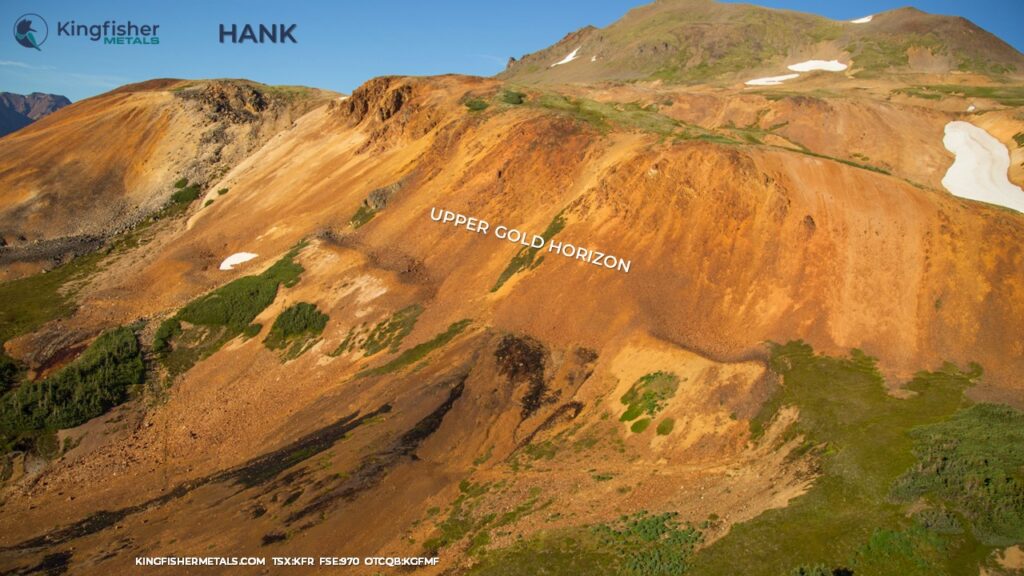
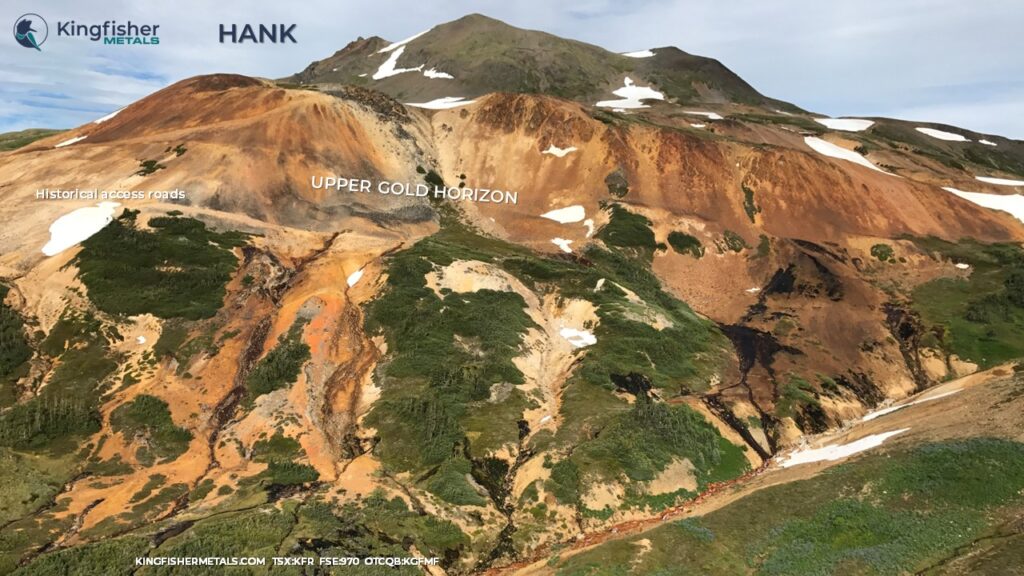
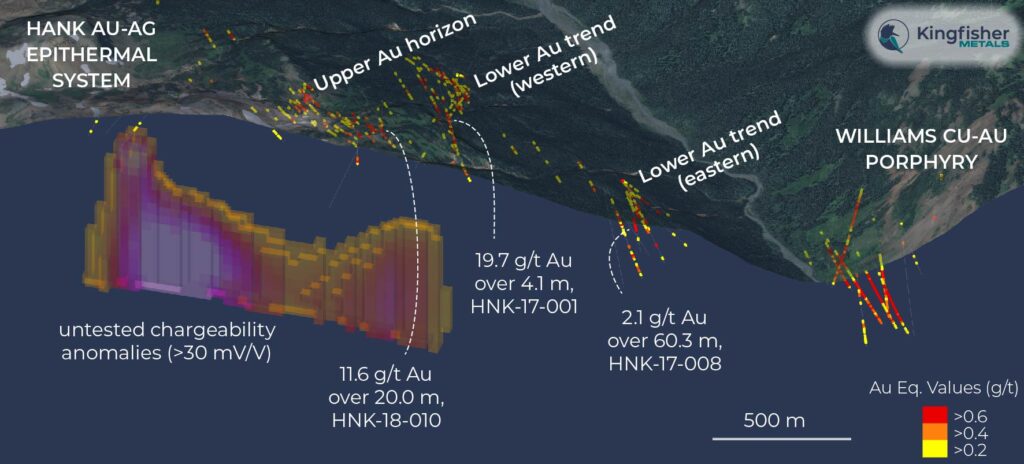

*Mineralization hosted on adjacent and/or nearby properties is not necessarily indicative of mineralization hosted on the Company’s property


